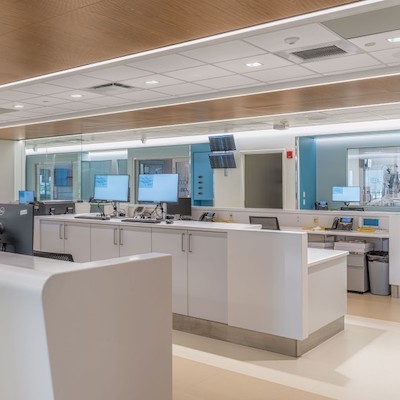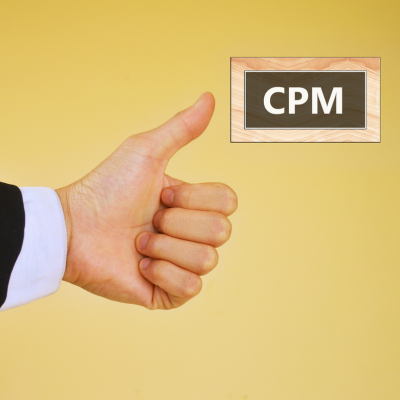Contact Information
info@leanconstructionblog.com
Related Webinars
all webinars
Last Planner and Takt Software Directory
This directory contains all of the Last Planner and Takt Software on the market. We encourage you to do your own research, set up a call with the vendors, and choose the software that fits your needs. This directory is meant to make it easy to find, compare, and make the decision on which software you can use.
Why Use the Last Planner System
As a superintendent, The Last Planner System is the most useful tool in my tool box. It forms the structure that allows me to develop a culture of trust and respect within my project teams. Allowing everyone involved in the project to feel like a valued part of a team that looks out for each other and works together for what is best for the project.

An Abridged History of the Last Planner System®
Lean principles and practices initially developed independently within the construction industry. The early contributors to Lean Construction include Greg Howell, who learned the value of collaborative work from the commanding officer of a construction battalion on which he served.
What is the Last Planner System?
Its full name is the Last Planner System® of Production Control. Production control is necessary on projects to support working toward planned accomplishments, doing what can be done to move along a planned path, and when that becomes impossible, determine alternative paths that accomplish desired goals.
Daily Huddle 101
A superintendent once told me that he did not need a daily huddle. He was confident that he already knew everything that was happening on the project. I explained to him that the huddle was not for him. It was for the people leading the field crews.
Greg Howell's Life and Contributions
He was born February 3, 1943 in Springfield, Missouri to Alvin Hinshaw Howell and Joyce Howell. He lived in Independence, Missouri before moving to Scottsdale, Arizona when he was in high school. Greg studied construction engineering at Stanford, was a member of the ATO fraternity, and played on the university rugby team.

What is the Last Planner System?
It’s full name is the Last Planner® System of Production Control. Production control is necessary on projects to support working toward planned accomplishments, doing what can be done to move along a planned path, and when that becomes impossible, determine alternative paths that accomplish desired goals.

Implementing the Last Planner System - How do you do that?
Life can throw unexpected curve balls. One such came on attending a workshop led by Christine Pasquire many years ago at Loughborough University in the UK. In talking about the Last Planner System (LPS), she revealed an approach that appeared logical and intuitive.

The History of the Development of the Last Planner® System
According to Glenn Ballard, one of the inventors of the Last Planner System (LPS), an earlier study on Crew Planning in the 1980s was a precursor to its development. At that time, Glenn was the Productivity Improvement Manager for Brown & Root’s Construction in the US.

5 Levels of the Last Planner® System “Should, Can, Will, Did and Learn”
The Last Planner System (LPS) is a production planning and control system designed to produce predictable workflow and rapid learning in programming, design, construction and commissioning of projects. LPS has five main elements.

How to Lead a Pull Plan Session
Around 15% of builders are using Pull Planning (although only 9% are using the full Last Planner® System) on at least some of their projects, according to the AGC and McGraw Hill [1] . The challenge is how to get the most value in the shortest time during a pull planning session.

Location Based Management System & Takt Time Development for Construction Sites in France
Lean Construction has been developing in France since the 2010s, mainly under the impetus of specialized consultants for the largest general contractors.

How to Become a Lean Builder
Warren Buffet once said, “Investing is simple, but not easy.” I feel the same way about Lean construction. I have seen many builders look at the tools and behaviors of Lean building and say, “Oh I already do that, that’s common sense,” but then struggle to consistently put the tools and behaviors in place.
Anatomy of a Huddle – 6 Steps Towards Better Play-Calling
Why do you want to huddle? It could be to keep internal team members from the same company informed or to communicate workflows externally with members from 2 or more companies.

10 Tips for Efficient and Effective Last Planner® System Sessions
It’s full name is the Last Planner® System of Production Control. Production control is necessary on projects to support working toward planned accomplishments, doing what can be done to move along a planned path, and when that becomes impossible, determine alternative paths.
Using Agile & Scrum to Assist LPS ‘Make-Ready’ & Constraints Resolution
Planning problems in construction are accepted and primarily relate to management focus being on control; planning not conceived as a system design; crew level planning being neglected; planning system performance not measured.

4 Tips To Improve Your Next Pull Planning Session
I find myself going through similar motions in the beginning stages of project planning. Our team has submitted CPM schedules per owner’s requirements and have moved on to selecting contractors. This is starting off as the typical construction process so far.
Does Critical Path Management Work?
The CPM concept is simply that the longest sequence of tasks, the critical path, will determine the duration of a project. Theoretically, that makes complete sense. The problem arises in execution. A project is a temporary endeavor undertaken to create a unique product, service, or result.

Teaching Pull Planning Using Origami Gamification
The Last Planner® System (LPS) is a production planning system designed to produce predictable work flow and rapid learning in programming, design, construction and commissioning of projects. LPS was developed by Glenn Ballard and Greg Howell and has five elements.

The 5 Benefits of the Big Room with the Last Planner® System
The concept of “Big Room”, also known by the Japanese word “Obeya” is linked with the concept of co-location, which in Toyota refers to the practice of locating multidisciplinary teams in the same place to improve communication and creativity.

Empowering your project staffs to improve plan reliability
You know the power of planning reliability. Your reliable plan helps you stay on the right track in terms of schedule and budget. The Last Planner System has been popularly used to improve the workflow reliability.
Implementation Model of Lean Construction Concepts in Fast Building Projects
The model for implementing the Lean Construction philosophy in fast projects was developed during work carried out over more than one year with a general contractor in Brazil.
Last Planner System Versus SCRUM - Which One Should I Use?
LPS and Scrum share several similarities including the process of refining or breaking down large chunks of work into smaller-manageable-executable tasks which team members commit to complete in a reasonable time frame.
Synergies between the Last Planner System and SCRUM
Historically, the greatest challenges in the construction industry are cost and schedule deviations that stem mainly from alterations in the sequence of activities, inefficient scheduling, and high waste rates of operational time, materials and operational efficiency.

The Daily Huddle – COVID-19 Protocol
“Shelter in place” ordinances have been rolled out in towns and cities throughout the nation, but construction has been deemed “essential” in many places. I can’t think of a better word than this for the work we do. This means our industry can continue showing up each day and build resources for the people in our communities.

Applying the Last Planner in a Small HVAC Company
According to the US Bureau of Labor Statistics, there are 6.5 million people working in the US construction industry in 2016. The average construction worker is statistically more likely to work in a small or medium business than a large multi-billion company.

Control The Last Planner System Using Visual Management
In line with the famous saying “no battle plan survives contact with the enemy”, construction production systems need solid mechanisms to control their projects on site. The Last Planner System and Takt Time Planning offer a collaborative method for planning.

Grounded in principles: Maximizing the benefits of Last Planner System
I still remember my first “aha” moment sitting in Glenn Ballard’s Lean Construction course. As both a PM and Superintendent on the Big Dig, I had struggled to figure out why some actions improved project performance and others made no dent in the chaos.

Using production management with the Last Planner® System
How do we know if we are doing it right?” This question by a participant in an LPS workshop during one of my early engagements has stuck with me as I’ve worked with teams and individuals furthering their lean journey.

How to Succeed with the Lookahead Process of The Last Planner System
Properly executing the look ahead planning portion of The Last Planner System can ensure your project team is set up for success. This exercise typically occurs during weekly team meetings where teams evaluate what “can” be done over the next 6 to 8 weeks.

A Digital Approach to Implement and Use The Last Planner® System
The pros of using the Last Planner® System [1] in Projects is a well referred topic [2, 3, 4]. However, especially in a design phase with several participants who are located far away from each other, analog systems can be uneconomical.

Introduction to Location Based Management System: CPM on Steroids Combined with Flowline Visualization
The Location-based Management System (LBMS) builds on decades of work on location-based scheduling methods. The first recorded utilization of location-based methods in vertical construction was in the Empire State Building.

5 Common Mistakes Implementing and Using a Digital Last Planner System and How to Avoid Them
The Last Planner System (LPS) is a process used to develop a collaborative production planning that is based on the team experience in order to achieve efficient and effective design and construction processes.
Are You Doing the Right Work to be Successful with the Last Planner System®?
People familiar with the Last Planner System think it’s a brilliant way to increase work production reliability on a project. However, more than a few people attempting to implement achieve less than front-page results.

Pull Planning in Design - Best Practices and Common Pitfalls
At the heart of most lean processes is the drive to reduce waste and increase reliability. The Last Planner System is no different. Over the last few years, construction teams have been able to utilize the The Last Planner System to reduce waste in terms of scheduling, production, and quality control.

Project Managers are Last Planners Too!
We often identify “last planners” as the people responsible for performing the work on a construction site. Although project managers do not perform any of the work on a construction site, they do have more responsibility to the project other than just organizing the next golf trip!

Three Reasons Why the Last Planner® System is Essential for Efficient Design Management
The design and construction process is usually complex, uncertain, and requires the input and decisions from many stakeholders in multiple organizations to produce the final asset that is “ready for operation”.

5 Big Ideas behind Lean Design and Construction
Back in Spring 2004, Sutter Health held a conference for the design and construction companies that they had worked with to build their facilities. Lean Project Consulting facilitated the event and presented a manifesto to guide Sutter’s future capital program.

The Step We Often Overlook When Implementing The Last Planner System
As a superintendent, I take pride in the fact that projects I am part of finish on time. I take pride in a safe job site. I take pride in a clean job site. I was brought up in the industry to put work in place and not lose money doing it. While walking my project, I am trained to look for things to react to.

Implementing the Last Planner Using Data Driven Model – New Zealand Case Study
Research and experience with the implementation of the Last Planner System (LPS) in the New Zealand (NZ) construction sector are very few.

How to Control Informal Work Packages with the Last Planner System
Research and experience with the implementation of the Last Planner System (LPS) in the New Zealand (NZ) construction sector are very few.

The Last Planner ® System during the Finishing Phase in the World of Small Trade Partners
The Last Planner System (LPS) is a production planning and control system designed to produce predictable workflow and rapid learning in programming, design, construction and commissioning of projects.

The Human Factor in the Implementation of the Last Planner® System
The aim of this post is to describe, from experience in Argentina, the impact the Last Planner System (LPS) had on a group of responsible people involved in a project. Implementing the LPS raises different types of technical and human factor challenges.

The History of the Last Planner® System
The roots of the Last Planner® System reach back before the word “Lean” was coined by the International Motor Vehicle Program and made famous by the book The Machine that Changed the World.
The Last Planner System with a new perspective on productivity
Last Planner System (LPS) is known as one of the most popular Lean Construction (LC) tools, which focuses on improving the workflow of the project’s activities. This is applied through the emphasis on identifying then eliminating – or reducing – the potential time wastes.
Protecting Yourself From Advanced Work Packaging (AWP)
Advanced work packaging (AWP) has gained a considerable following, particularly from the owner’s side. Heck, what could be wrong with planning the work in bite-sized chunks and getting improved craft productivity?
Last Planner® System or Advanced Work Packaging?
These cost and scheduling deviations often originate during the project planning stage. Moreover, several other problems related to quality, safety, environmental and the relationship between owners and contractors are also caused by planning failures.
Rewards Of Visual Production Planning
The principles of Lean Construction are rapidly adopted by construction companies at a project management and admin level. However, the benefits are exponential when focusing on field application that benefits the trades.
Last Planner System – An Incremental Approach to Radical Change in Your Workflow
The Last Planner System® (LPS) as a whole can radically change the way you plan and execute your construction work. In its entirety LPS can be daunting.

Was COVID-19 a Challenge or Enabler for LPS?
The study also suggested a framework for successful implementation of LPS in a virtual environment. At the base of the framework lies ensuring top and mid management buy-in for lean culture and concepts.

Keeping Phase Plans Simple
Have you ever heard a trade partner complain about a phase plan (pull plan) being over four (4) hours? Have you been a part of a phase plan with facilitators that drags on and on?

Weekly Work Planning Guide
This guide is provided to identify the essential components of a quality Weekly Work Plan along with additional actions that strengthen the value of the practice.

Rising Terrain Daily Huddle Guide
The Daily Huddle is a fundamental coordination practice that keeps people alerted to the current state of planned work and how that work may have been influenced by unplanned events. For project teams implementing the Last Planner System® the Daily Huddle serves as an initial step to learning to plan work more reliably.

Unintended Consequences of Chasing Craft Productivity
The global engineering and construction industry is obsessed with worker productivity (both knowledge and craft workers) driven by the belief that there is a direct relationship to project performance results.

A Practical Planning Strategy for Reducing Project Time 20 Percent
A 20% schedule reduction is consistent with the performance observed by me on a range of projects. One example is the Lakewood Family Health Center project. The team delivered the 65,000-sf Emergency Services / Medical Office Building facility with an initial schedule of 19 months in 14 months, a 24% savings of time.

Creating Flow in Pull Planning for Design Responsibility
Pull Planning is used in Lean Design to plan and organize work to maximize efficiency and minimize waste. It involves setting specific goals and objectives for a project and then breaking those goals down into smaller tasks that can be completed in a specific order.

The Core Reason Your Capital Projects Take Longer to Deliver
There are a few primary benefits and a host of secondary benefits to completing a capital project quickly. Here are important primary benefits. Time to revenue is reduced and your investment is serving the people it is designed to help. Carrying costs during construction are reduced.

How Wise Construction Reduced a Construction Schedule by More Than 25%
In late May of 2023 Wise Construction began the renovation of a 20,000-square-foot hospital wing that provides Newton-Wellesley Hospital outside of Boston with a 24-bed medical/surgical unit.

Why Modern Construction Demands Both CPM and Lean: The Future Is Hybrid
For decades, the Critical Path Method (CPM) has served as the backbone of construction scheduling. It's detailed, deterministic, and provides the long-range visibility executives need to forecast outcomes, manage risk, and protect margins.


